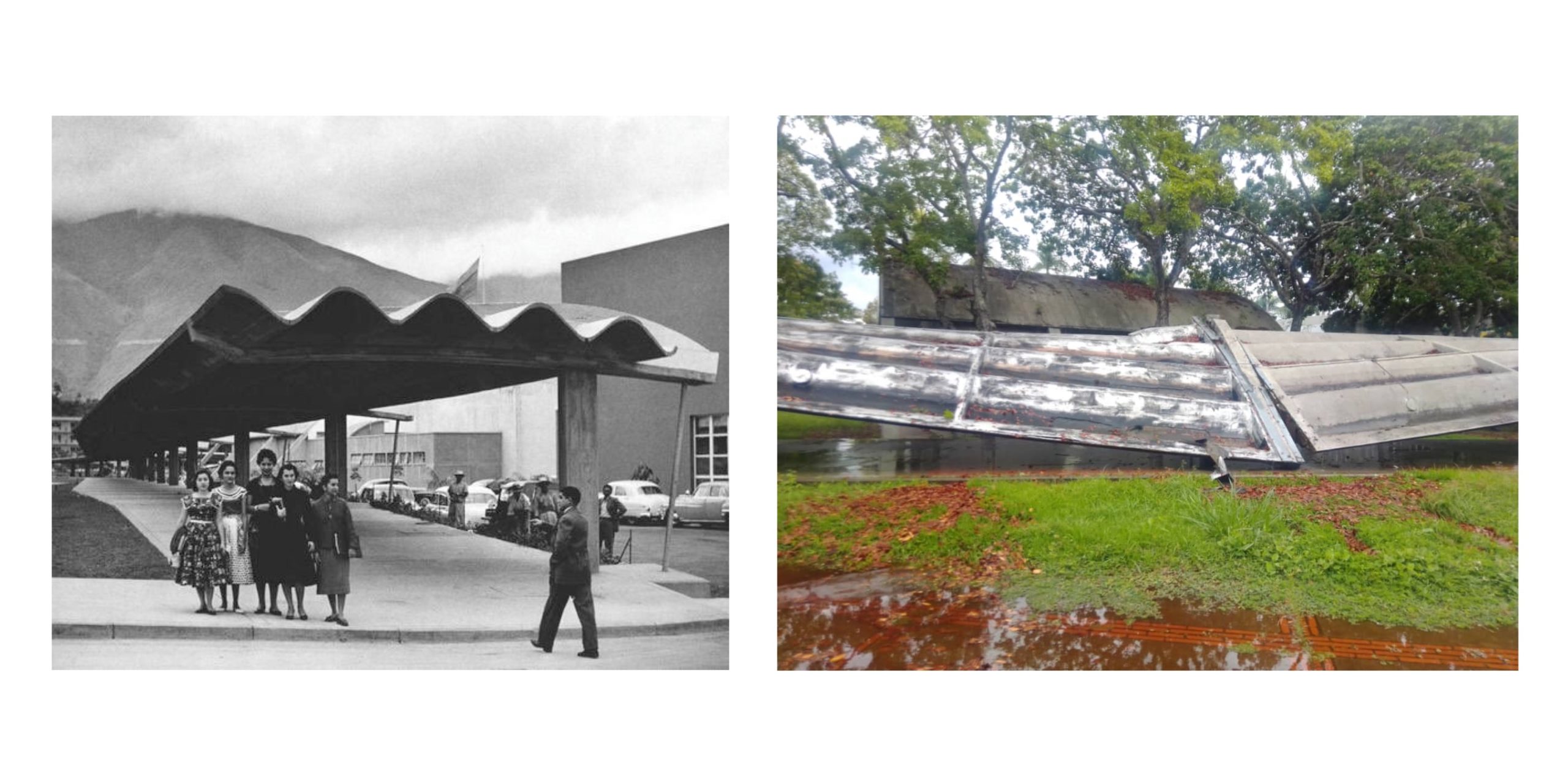Negligence Is Destroying a Venezuelan Architectural Treasure
Part of the concrete canopy of the famous corridors that connect the buildings of Ciudad Universitaria collapsed this morning


Photo: Sofía Jaimes Barreto
In the early 1940s, while World War II was ravaging Europe, Venezuela was booming. The South American country had high revenues because of a new oil law and was in dire need of a larger and more modern location for the Universidad Central de Venezuela (which had been founded in 1721). The project would require a great commitment to both urban planning and architectural design, so the government of President Isaías Medina Angarita bought the necessary land and after careful consideration gave the project to the young architect Carlos Raúl Villanueva.
Villanueva convinced the authorities that even though this ambitious project would require designing several buildings throughout a considerable amount of time and that it should be done under one architect in order to achieve coherence and homogeneity. So, in 1945, the construction for the university’s new headquarters began in Caracas. The project took more than 25 years to complete and would come to represent the highest ideals and proposals of urban planning, architecture, and modern art that were at the vanguard at the time in the Western Hemisphere.
The significance of the Ciudad Universitaria de Venezuela is unquestionable. The university campus not only integrated a large number of buildings and functions into a clearly articulated ensemble; it would also become one of the most significant permanent collections of modern public art, due to both the impressive list of artists who took part in this project, as well as the very experience of inhabiting its spaces.
Throughout the years the UCV became one of Venezuelans’ most prized possessions; the whole country rejoiced when it was officially registered in UNESCO’s World Heritage List, because it confirmed the exceptional and universal value it had. Students and visitors had known this for decades: anyone who has visited the UCV and walked through its generous open spaces, who has seen how the architecture is integrated into the landscape, marveled at the concrete forms of its buildings or who has contemplated the large body of works commissioned and built in-situ knows that this is a treasure trove: works by international masters like Alexander Calder, Fernand Léger, Sophie Taeuber-Arp, Wifredo Lam and Henri Laurens, among others, but also by Venezuelan artists like Alejandro Otero, Mateo Manaure and Victor Valera to name a few.

Not only the university campus integrated a large number of buildings and functions into a clearly articulated ensemble, it would also become one of our most significant collections of modern public art.
Photo: Time Magazine
Nowadays the Ciudad Universitaria is a sad reminder of how, decades ago, Venezuela was a cultural regional power. For the last two decades, the university’s budget has been slashed—alongside most cultural institutions and museums—partly because of the chavista government’s scorn for high culture but also because of its contempt for one of the country’s main universities.
A couple of years ago, the architect Raúl Grioni was asked to evaluate possible aid for the Conservation of the University Campus. He held press conferences, entertained the ministers on duty and disappeared from the map as quickly as he had arrived. Since then, the regime has basically provided pennies for the preservation of the UCV, so this UNESCO heritage site and its patrimony have been at risk for a while.
Unsurprisingly, after heavy rains and decades of no conservation, part of the roof of the covered pedestrian passage in front of the Engineering Faculty library collapsed this morning. After almost 60 years, the steel caved in. Historical buildings and structures require impermeabilization and maintenance. Fortunately, nobody was hurt, but it could happen again.
The Ciudad Universitaria de Caracas represented Venezuela’s utopia of modernity; it represented a desire for a new society that would be better, instead we have become a revolutionary dystopia and what happened this morning is a reflection of the collapse of the country. It still hurts.
Caracas Chronicles is 100% reader-supported.
We’ve been able to hang on for 22 years in one of the craziest media landscapes in the world. We’ve seen different media outlets in Venezuela (and abroad) closing shop, something we’re looking to avoid at all costs. Your collaboration goes a long way in helping us weather the storm.
Donate




